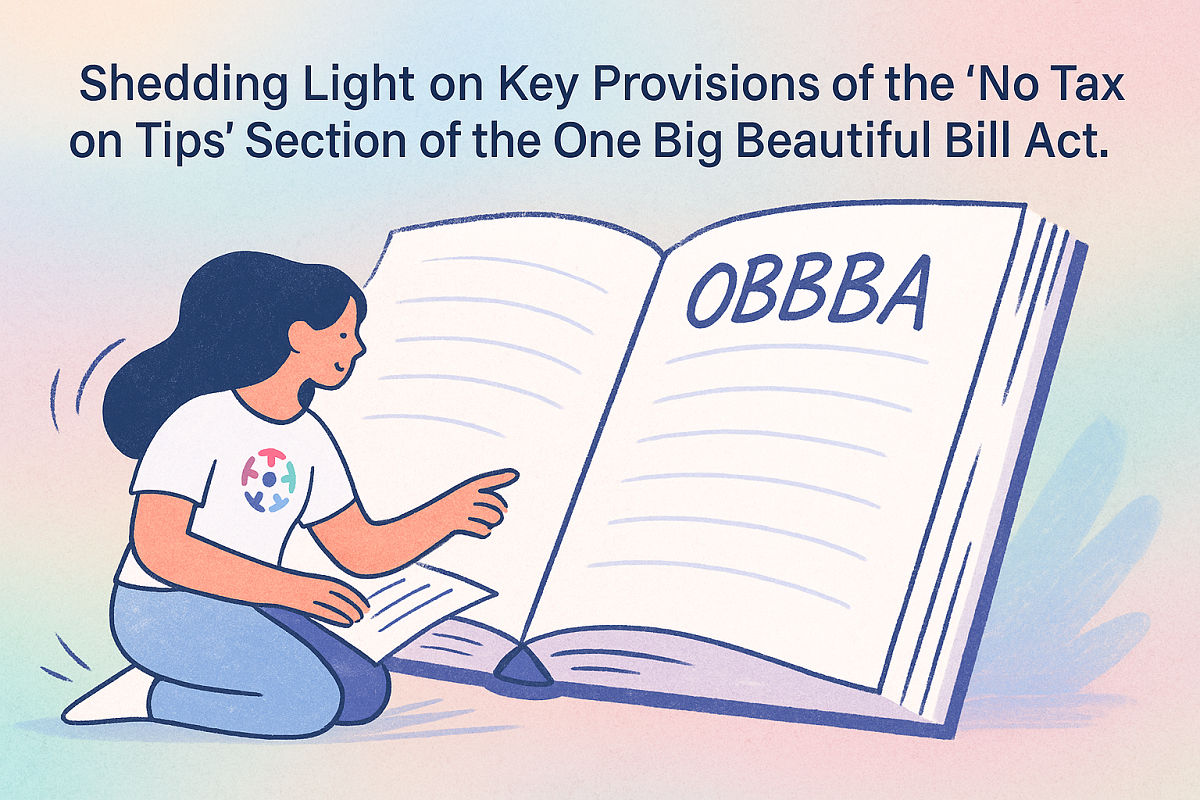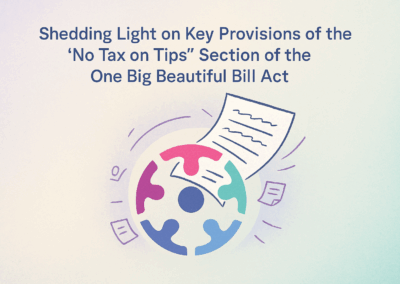The One Big Beautiful Bill Act (OBBBA) introduced a major change for millions of American workers: overtime pay will no longer be taxed at the federal level. Beginning in 2025, eligible employees can deduct qualified overtime wages directly from their taxable income, potentially lowering their tax bills significantly. At the same time, employers will have new responsibilities for payroll reporting and compliance.
This article breaks down how the law works, what’s required of both employers and employees, and how to prepare for a smooth transition.
What We Will Cover in This Article
- What the “No Tax on Overtime” provision includes
- Deduction limits, income phaseouts, and eligibility rules
- Employer and payer reporting responsibilities
- Key effective dates and the transition timeline
- How employers and employees should prepare
- How to request our employer/employee action checklists
Section Highlights (Sec. 70202, new IRC §225)
Overtime Pay Is Now Tax-Deductible
- Employees may deduct eligible overtime wages from federal taxable income.
- Available to all qualifying taxpayers, including non-itemizers.
What Qualifies as “Overtime” Under the Law?
- Overtime must comply with the Fair Labor Standards Act (FLSA) and be paid above the regular rate.
- Tip income is excluded (addressed separately under the tips provision).
- Overtime must be separately reported on official tax documents (e.g., W-2/1099).
Deduction Limits and Income Phaseouts
- Maximum deduction: $12,500 annually (single); $25,000 (married filing jointly).
- Phaseout: begins at Modified AGI of $150,000 (single) / $300,000 (MFJ); reduced by $100 per $1,000 over the threshold.
Eligibility Criteria
- The taxpayer received qualifying overtime pay (FLSA-defined premium portion).
- A valid Social Security Number appears on the tax return.
- Married taxpayers must file jointly to claim the benefit.
Employer and Payer Reporting Requirements
- Form W-2 (Employees): Employers must itemize qualified overtime compensation (new W-2 requirement).
- Form 1099 (Contractors): Payers must separately report qualified overtime amounts to the IRS and recipients.
- Temporary Flexibility: For overtime paid before Jan 1, 2026, reasonable estimation methods are permitted to separate amounts.
Key Dates and Implementation Timeline
How Should Employers and Employees Prepare?
For Employers
- Update timekeeping/payroll to flag and track FLSA-qualified overtime separately.
- Ensure W-2/1099 outputs include the new **qualified overtime** fields.
- Train HR/payroll staff; communicate changes to impacted employees.
- Coordinate with your payroll/HCM provider to configure reporting and test file formats.
For Employees
- Review pay stubs and year-end forms to confirm overtime is separately listed.
- Understand your income threshold—phaseouts can reduce the deduction.
- If married, note the requirement to file jointly to claim the benefit.
- Consult a tax professional if your income fluctuates near phaseout levels.
Final Thoughts & What to Expect Next
The “No Tax on Overtime” deduction is a meaningful benefit for employees who regularly work overtime, but it does require employers to refine payroll practices and reporting. Expect additional IRS guidance ahead of the 2026 withholding procedure updates. Getting your data structure and communication plan in place now will minimize friction at year-end and during filing season.
Need a Clear Action Plan?
At dynamo HCM, we keep clients ahead of compliance changes, explain what they mean in plain English, and provide practical steps for both employers and employees. We’ve also prepared a ready-to-share action checklist:
-
- Employer Checklist: reporting duties, payroll/HCM configuration, employee communications.
- Employee Checklist: how the deduction works, what to look for on W-2/1099, how to claim at filing.





